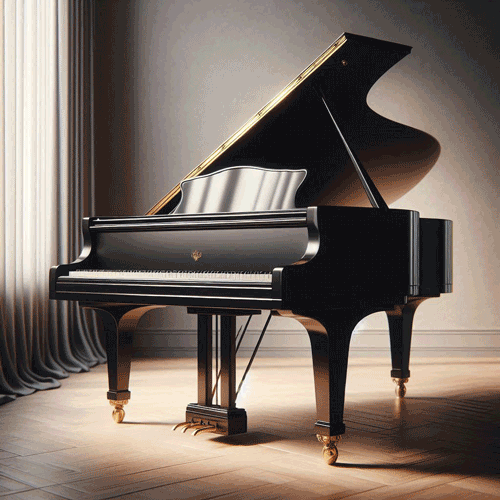- Home
- Darryl’s Guide to Moving a Piano Without Breaking a Sweat

Darryl’s Guide to Moving a Piano Without Breaking a Sweat
Darryl's Guide to Moving a Piano Without Breaking a Sweat
Moving a piano might sound like something only superheroes can do. They're heavy, awkward, and one wrong move could damage the piano—or your back. But with the right plan, the right tools, and a little muscle, even something as big as a piano can be moved without breaking a sweat.
Here’s Darryl’s simple guide to doing it safely and smartly.
Step 1: Know What You’re Dealing With
Not all pianos are the same. Before you move it, find out what kind of piano you’re dealing with:
- Upright Piano: Tall and heavy, but easier to move through doorways.
- Baby Grand or Grand Piano: Much wider and heavier, and needs more planning.
Knowing the size and weight helps you decide how many people you’ll need and what kind of equipment to use.
Step 2: Gather Your Tools
“You don’t need to be made of steel to move a piano. Just smart planning and good teamwork.”
— Darryl Haulman
- Furniture Dolly
- Moving Straps
- Blankets and Padding
- Packing Tape or Stretch Wrap
- Measuring Tape
Step 3: Protect the Piano
Before you move it an inch, wrap the piano with thick blankets. Use tape or wrap to keep the padding in place. Close and lock the lid to protect the keys. If it doesn’t lock, tape it shut carefully.
Pro tip: Protect walls and corners too. A moving blanket on a wall can stop scratches and dents before they happen.
Step 4: Plan the Path
Walk the path from the piano to the truck (or next room). Remove anything in the way—rugs, furniture, or wall art. Measure doorways, corners, and tight spaces to make sure the piano will fit.
You’ll thank yourself later.
Step 5: Lift With Care
This is where your muscles come in—but it's not just about strength.
- Never lift a piano by its legs. They can break off.
- Use at least 3–4 people. One on each side, with someone guiding the path.
- Use moving straps and a dolly when possible to roll instead of carry.
- Take your time. Slow and steady wins the race (and saves your back).
Step 6: Load It Safely
If you’re putting the piano into a moving truck:
- Use a ramp to roll it in.
- Place the piano against the wall of the truck, usually upright.
- Strap it tightly to the wall to keep it from sliding around.
Don’t stack anything on top of it—ever.
Step 7: Tune It After the Move
Even a gentle move can mess with a piano’s sound. Wait a few days after moving (so it adjusts to the new temperature), then call a piano tuner to get it sounding just right again.
Bonus Tip: Hire a Pro
If you’re not 100% confident, don’t risk it. Pianos are expensive and heavy—and there are pros who move them every day. On The On-Demand Mover Directory, you can find movers who specialize in heavy, delicate items like pianos. Many even offer same-day service.
Final Notes From Darryl
You don’t need to be made of steel to move a piano. With smart planning, the right gear, and some teamwork, you can get it done safely and smoothly.
But hey—if you do want to save your back and your time, check out the trusted movers on The On-Demand Mover Directory. Let the pros handle the heavy lifting while you relax.
Ready to move something big?
Start your search today at OnDemandMover.com
Frequently Asked Questions
Can I move a piano by myself?
Unless it’s a keyboard, probably not. Upright and grand pianos are extremely heavy and awkward—moving one safely takes planning, tools, and a team.
Do I need to retune my piano after a move?
Yes. Even a gentle ride in a truck can shift your piano’s internal components. Wait a few days to let it adjust to its new room temperature, then call a tuner.
For more stories from the field—including near misses, smart hacks, and customer Q&As—visit our Community Hub.
